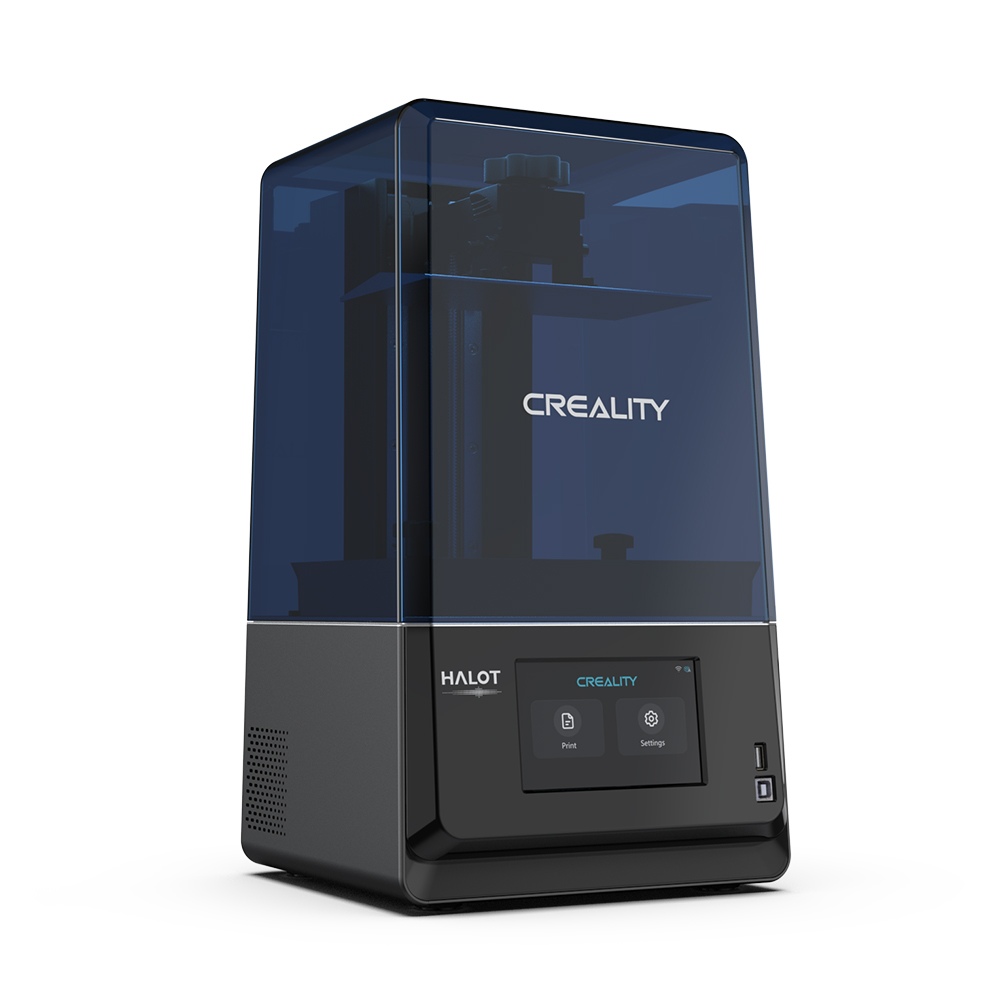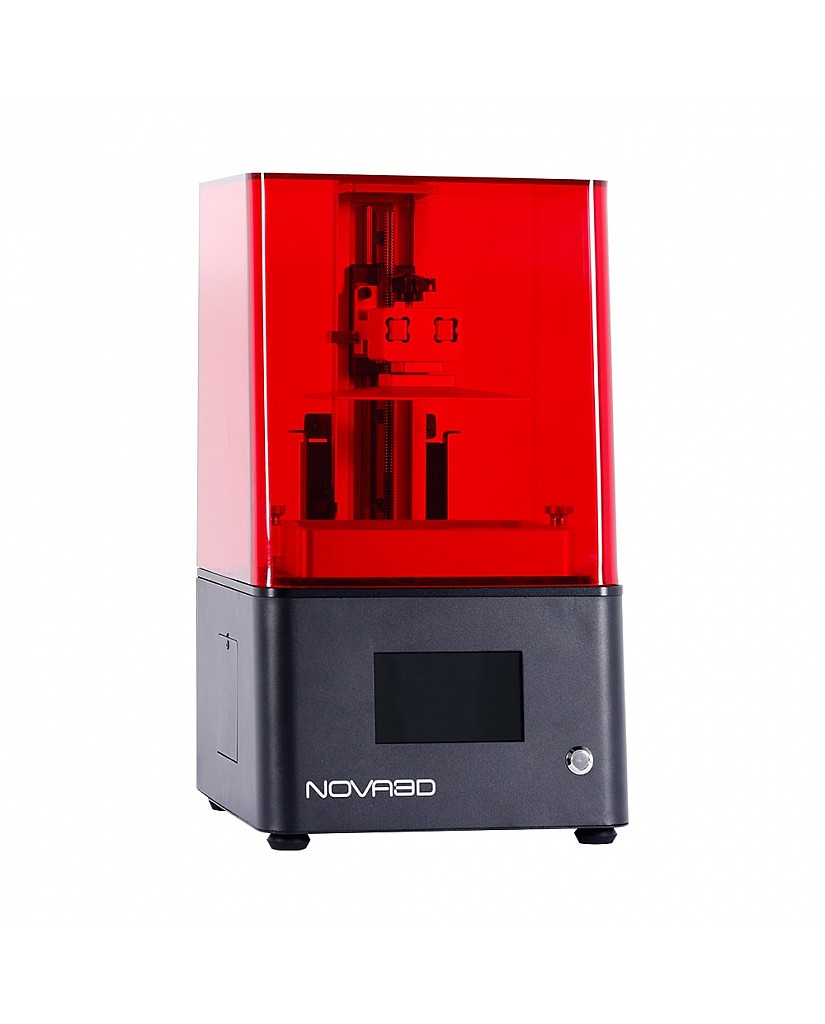Compare Halot One Plus vs Bene4
Comparison between the best 3D printers
Choose the best 3D printer at the best price. The cheapest 3D printers are here.
Buy a 3D printer here with 3D Fila.
 |
 |
|
| Model | Halot One Plus[BUY Halot One Plus] |
Bene4 |
| Printing Material | Resin | Resin |
| Buy Resin for Creality 3D Halot One Plus | Buy Resin forNova3D Bene4 | |
| Estimated price | $399,00 | $350,00 |
| Manufacturer | Creality 3D | Nova3D |
| Release Year | 2022 | 2021 |
| Print Volume [mm] | 102x172x160 | 80x150x130 |
| Printer Size [mm] | 236x245x416 | 240x240x430 |
| Weight [kg] | 6,8 | 9,5 |
| Power Loss Recovery | NO | NO |
| Technology | LCD | MSLA |
| Screen Resolution | 2k | |
| Max Print Speed [s/layer] | 1 | 1 |
| Maximum Resolution [mm] | 0,01 | |
| Processor | ||
| Display | Display touchscreen 4,3'' | |
| Power Supply | ||
| Connectivity | USB / Wi-Fi | USB / Wi-Fi |
| Operating systems | Windows, Mac, Linux | |
| Date of registration in the system | 2022-10-11 | 2023-03-24 |
| Release date | 2022 | 2021 |
| Extra features | Crealitys Halot-One Plus printer stands out for its 4K+ resolution that delivers sharp details and consistent surfaces. It features a fast and responsive 5-inch LCD interface, as well as easy-to-use Halot Box software. It offers Wi-Fi connectivity and remote print monitoring, as well as an integrated air filtration unit, a rare feature in this price range. The Halot-One Plus is designed for the prosumer market, combining high quality with advanced features such as Wi-Fi and air filtration. During testing, it stood out for implementing these features at an affordable cost, while maintaining functionality. It features an attractive design with a UV-resistant blue cover and a robust dual rail system for the Z-axis, ensuring smooth and consistent movements. The large LCD and high resolution of the LCD mask (4320 x 2560) are other strong points, allowing for fine details and textures in prints. | The Bene4 Mono Printer stands out for its 6.08-inch 2K monochrome display, which allows for faster curing times and longer lifespan. With print accuracy that rivals its competitors, it offers a factory-pre-leveled build plate, eliminating the need for manual adjustments. It has a hinged lid for easy access and reduced resin mess. The metal reservoir comes with useful features such as pouring aid and maximum level indication. In addition, it has Wi-Fi connectivity and a sleek design with a 4.3-inch touchscreen display. |
| Support for multiple colors and materials (AMS and CFS) | NO | NO |
Notes * |
||
| Cost-benefit | 8 / 10 | 8 / 10 |
| Hardware | 1.2 / 10 | 0.5 / 10 |
| Tela | . | . |
| Print volume | 3 / 10 | 3 / 10 |
| Performance | 9 / 10 | 9 / 10 |
| [BUY Halot One Plus] |
Conclusion |
| In comparing the Creality 3D Halot One Plus with the Nova3D Bene4, several key aspects must be considered, including price, print capabilities, features, and overall performance. The Halot One Plus, priced slightly higher, offers superior print volume and a high-resolution LCD that enhances detail and surface quality. Its robust build quality, advanced features like an integrated air filtration system, and user-friendly software make it ideal for prosumers seeking quality and innovation. Furthermore, its design not only includes Wi-Fi connectivity for remote operations but also emphasizes user experience with a large touchscreen interface. On the other hand, the Bene4 demonstrates commendable performance at a lower price point, thanks to its 2K monochrome display, which allows for quick curing times and extended lifespan. It simplifies user experience with factory-pre-leveled plates and a user-friendly design focused on ease of access and maintenance. Both printers scored similarly on performance and cost-benefit, indicating they provide value for their price; however, the Halot One Plus edges ahead in features, print volume, and overall quality. In contrast, the Bene4 might attract those prioritizing lower upfront costs and straightforward operation. Ultimately, if your focus is on exceptional print detail and advanced features, the Halot One Plus is a compelling choice. Conversely, if you are seeking good performance at an economical price with ease of use, the Bene4 presents itself as a very capable alternative. Choosing between the two will depend on your specific needs and budget considerations, but both printers represent excellent options in the current 3D printing landscape. |

